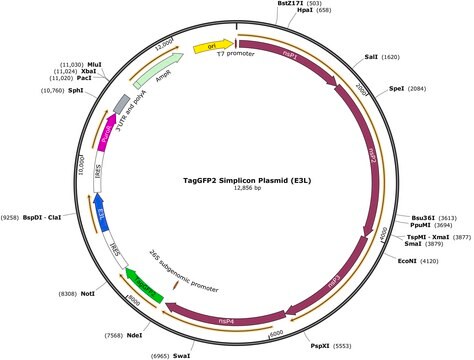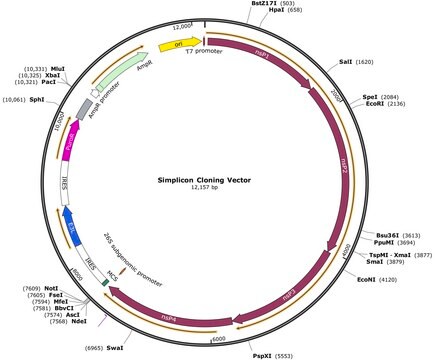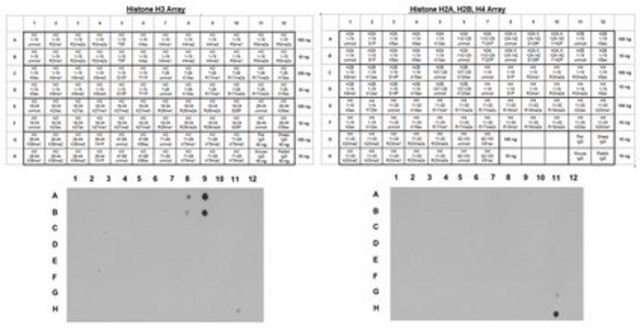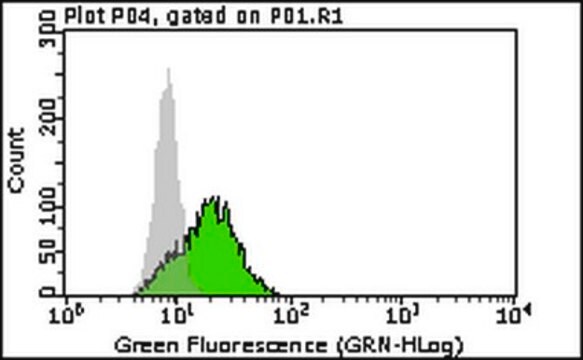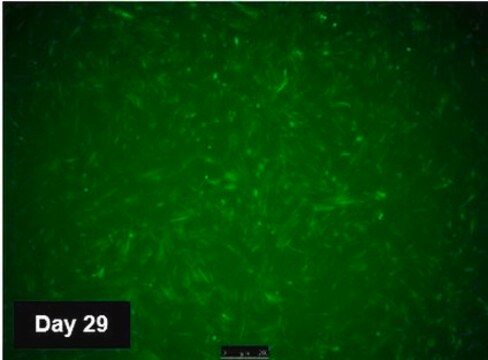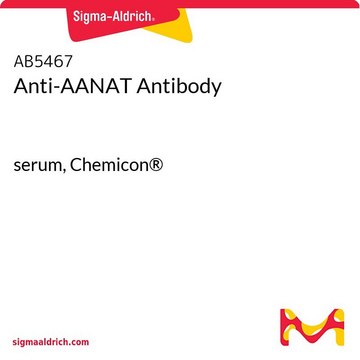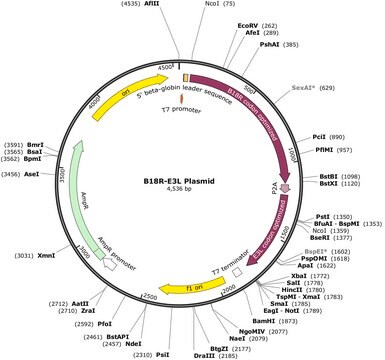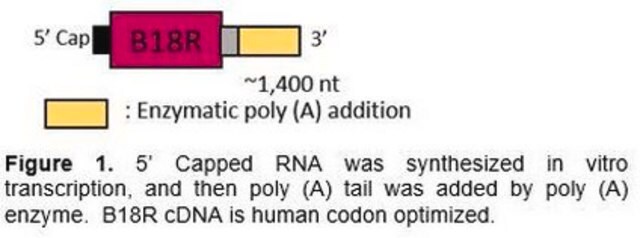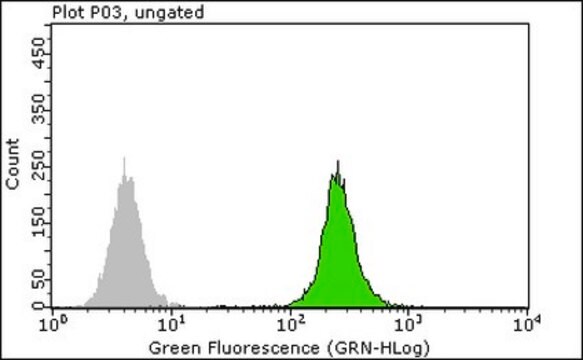MABE1078
Anti-TAF10/TAFII30 Antibody, clone 23TA-1H8
ascites fluid, clone 23TA-1H8, from mouse
Synonyme(s) :
Transcription initiation factor TFIID subunit 10, STAF28, TAF(II)30, TAFII-30, TAFII30, Transcription initiation factor TFIID 30 kDa subunit
About This Item
Produits recommandés
Source biologique
mouse
Niveau de qualité
Forme d'anticorps
ascites fluid
Type de produit anticorps
primary antibodies
Clone
23TA-1H8, monoclonal
Espèces réactives
human
Ne doit pas réagir avec
mouse
Technique(s)
ChIP: suitable
immunocytochemistry: suitable
immunoprecipitation (IP): suitable
western blot: suitable
Isotype
IgG1κ
Numéro d'accès NCBI
Numéro d'accès UniProt
Conditions d'expédition
dry ice
Modification post-traductionnelle de la cible
unmodified
Informations sur le gène
human ... TAF10(6881)
Description générale
Spécificité
Immunogène
Application
Western Blotting Analysis: A representative lot detected TAF10 (TAFII30) in HeLa nuclear extracts as well as in SPT20-containing SAGA immune complex, but not in ADA2a-containing ATAC immune complex (Nagy, Z, et al. (2010). Cell. Mol. Life Sci. 67(4):611-628).
Western Blotting Analysis: Representative lots detected the presence of TAF10 (TAFII30) in TAFII30-containing complexes immunoprecipitated from HeLa nuclear extracts (Nagy, Z., et al. (2009). Mol .Cell. Biol. 29(6):1649-1660; Wieczorek, E., et al. (1998). Nature. 393(6681):187-191).
Immunoprecipitation Analysis: Representative lots immunoprecipitated TAF10- (TAFII30-) containing complexes from HeLa nuclear extracts (Nagy, Z., et al. (2009). Mol .Cell. Biol. 29(6):1649-1660; Wieczorek, E., et al. (1998). Nature. 393(6681):187-191).
Epigenetics & Nuclear Function
Transcription Factors
Qualité
Western Blotting Analysis: A 1:1,000 dilution of this antibody detected TAF10/TAFII30 in 10 µg of A431 cell lysate.
Description de la cible
Forme physique
Stockage et stabilité
Handling Recommendations: Upon receipt and prior to removing the cap, centrifuge the vial and gently mix the solution. Aliquot into microcentrifuge tubes and store at -20°C. Avoid repeated freeze/thaw cycles, which may damage IgG and affect product performance.
Autres remarques
Clause de non-responsabilité
Vous ne trouvez pas le bon produit ?
Essayez notre Outil de sélection de produits.
Code de la classe de stockage
12 - Non Combustible Liquids
Classe de danger pour l'eau (WGK)
WGK 1
Point d'éclair (°F)
Not applicable
Point d'éclair (°C)
Not applicable
Certificats d'analyse (COA)
Recherchez un Certificats d'analyse (COA) en saisissant le numéro de lot du produit. Les numéros de lot figurent sur l'étiquette du produit après les mots "Lot" ou "Batch".
Déjà en possession de ce produit ?
Retrouvez la documentation relative aux produits que vous avez récemment achetés dans la Bibliothèque de documents.
Notre équipe de scientifiques dispose d'une expérience dans tous les secteurs de la recherche, notamment en sciences de la vie, science des matériaux, synthèse chimique, chromatographie, analyse et dans de nombreux autres domaines..
Contacter notre Service technique